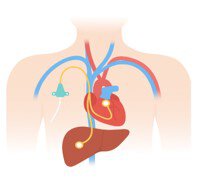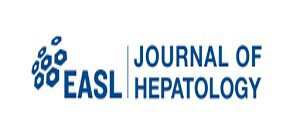Téllez L, Donate J, Guerrero A, Beraza IA, San Martín D, Alvarado E, Echevarría V, Puente Á, Zamora J, Prado SD, Tenes A, Balagué G, Vidal B, Geli C, Rodríguez MÁ, Baiges A, Brujats A, López D, Fernández S, Fortea JI, Jesús Del Cerro M, Villanueva C, García JC, Giráldez Á, Albillos A. Early portopulmonary hypertension predicts mortality in patients with cirrhosis: insights from the PORTO-DETECT cohort
J Hepatol. 2025
"A feared and under-recognized entity, portopulmonary hypertension demands early suspicion and diagnosis to chante its clinical course". - Dr. Luis Téllez Villajos
Summary:
Background & aims: Portopulmonary hypertension (PoPH) is a severe complication of cirrhosis and portal hypertension. In 2022, the European Task Force revised the diagnostic criteria for pulmonary arterial hypertension (PAH), defining early stages by a mean pulmonary arterial pressure (mPAP) of 20.5-24.5 mmHg and pulmonary vascular resistance (PVR) >2 Wood units. We evaluated the predictive prognostic value of these revised criteria in cirrhotic patients.
Methods: In this longitudinal, multicenter, observational cohort, 428 adults with cirrhosis and portal hypertension underwent right-heart catheterization between 2015 and 2023 and were stratified into five groups: normal, early-PoPH, classic-PoPH, post-capillary pulmonary hypertension, and unclassified profiles. All-cause mortality was analyzed by multivariable Cox regression and competing-risk models, with liver transplantation as an intercurrent event.
Results: Over a median follow-up time of 20.0 months (IQR 8.0 -36.0), three-year survival rates were 76.7%, 49.5%, and 42.0% in the normal mPAP, early-PoPH, and classic-PoPH, respectively. After adjustment for age, sex, liver function, and portal-hypertension severity, both early-PoPH (HR 3.5 [1.9 -6.3], p <0.01) and classic-PoPH (HR 4.5 [2.6 -7.6], p <0.01) remained independent predictors of mortality versus normal mPAP; these associations persisted in competing-risk analysis, whereas post-capillary pulmonary hypertension and unclassified groups did not differ from the normal mPAP cohort.
Conclusion: Applying the 2022 ESC/ERC definitions of PAH identifies a subset of patients with cirrhosis with early-stage PoPH, characterized by mild pulmonary vascular resistance elevation, who nevertheless face a markedly increased risk of death, emphasizing the need for systematic screening and early targeted intervention.
Impact and implications: Portopulmonary hypertension (PoPH) is a severe and often overlooked complication of cirrhosis. Using the updated 2022 ESC/ERS diagnostic criteria, this multicenter study identified a previously unrecognized subgroup of cirrhotic patients with early-stage PoPH, defined by mildly elevated pulmonary vascular resistance and mean pulmonary artery pressure. Despite their subtle hemodynamic changes, these patients showed significantly reduced survival, independent of liver disease severity. These results highlight the prognostic relevance of early PoPH and suggest that applying the new criteria may help refine risk stratification and guide closer follow-up or earlier consideration of targeted interventions in selected patients.
Why do you highlight this publication?
We highlight this work because it reframes portopulmonary hypertension as a continuum that starts earlier than traditionally recognized. It shifts practice from "treat when advanced" to "screen, suspect, and act earlier," integrating cardiopulmonary assessment into routine cirrhosis care. Beyond practice, it opens avenues to refine prognostic models, target vascular remodeling/inflammation, and update guidelines toward earlier recognition.
Publication commented by:
Dr. Luis Téllez Villajos
LIVER AND DIGESTIVE DISEASES GROUP. IRYCIS



